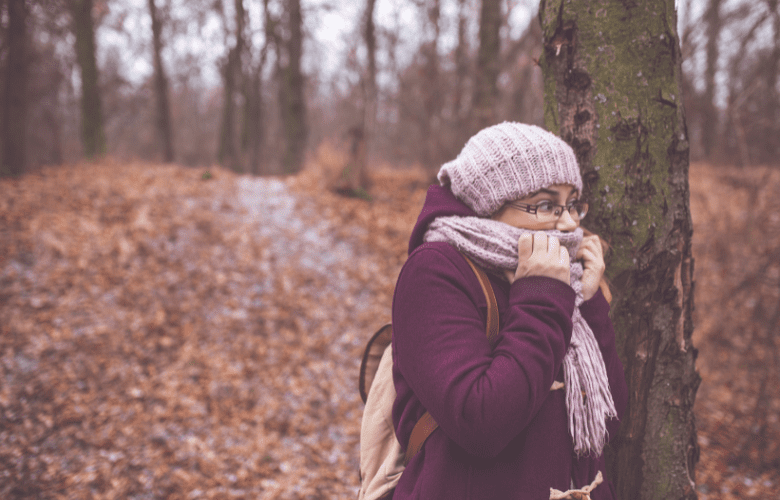The post 5 Astounding TCM Remedies to Beat Seasonal Affective Disorder appeared first on Healing Points Acupuncture & Wellness Center.
5 Astounding TCM Remedies to Beat Seasonal Affective Disorder
Feeling a bit down when winter rolls around is something many of us can relate to. But for some, the seasonal blues can escalate into Seasonal Affective Disorder (SAD), making those chilly months even tougher to endure. The good news is, that there are effective ways to combat the winter doldrums! In this blog, we’re diving into the world of TCM remedies to beat Seasonal Affective Disorder. Say goodbye to the winter funk and discover how TCM can bring a ray of sunshine into your cold-weather days.
WHAT IS SEASONAL AFFECTIVE DISORDER?
Seasonal Affective Disorder, or SAD, is like a mood rollercoaster that hitchhikes on the changing seasons. It’s a type of depression that hits hardest when fall enters the scene and winter’s chill sets in. This “winter depression” is no joke, with symptoms ramping up during the colder months.
Now, some folks get a quirky variation of SAD known as “summer depression.” Instead of crashing your winter party, it kicks off when spring is in full bloom, and take a vacation in the fall. However, this summer version is less common compared to its winter counterpart.
When winter arrives, TCM places the spotlight on the “Metal” element. It’s all about clarity, precision, and organization. However, winter’s icy touch can sometimes cool our spirits, leading to introspection and, well, a touch of the blues.
Then there’s the vital balance of Yin and Yang. Winter, with its cold and dark characteristics, leans heavily on the Yin side. But if there’s an imbalance, such as too much Yin without enough Yang (associated with light and heat) to provide balance, it can result in the classic symptoms of SAD, like gloominess and fatigue.
So, TCM teaches us that understanding this balance is crucial to managing SAD. When it gets out of whack, it’s time to bring in the remedies and practices that tip the scales back in our favor. Winter doesn’t have to be all doom and gloom; it can be a season of reflection and rejuvenation.
COMMON SYMPTOMS OF SEASONAL AFFECTIVE DISORDER
Now that we’ve scratched the surface of what SAD is, let’s dig into the symptoms that often come along for the ride. It’s like SAD has a checklist of its favorite unwanted guests, especially during those chilly months.
The most common symptoms of SAD include:
Depression: You might feel persistently sad, down, and hopeless. The world loses its color, and it’s like you’re stuck in a never-ending gray cloud. Fatigue: No matter how much you sleep, you wake up tired. You’re left feeling low on power and sluggish all day long. Mood Changes: Irritability and mood swings can become frequent companions. Everything seems to get on your nerves, and even the smallest things can set you off. Sleep Disturbances: Your sleep patterns may go haywire. You could find it hard to fall asleep, stay asleep, or oversleep, all of which can leave you feeling groggy and disoriented. Changes in Appetite: Suddenly, you’re all about those comfort foods, especially the sweet and carb-loaded ones, leading to potential weight gain.CAUSES AND RISK FACTORS OF SEASONAL AFFECTIVE DISORDER
So, why does SAD happen, and why are some people more susceptible to SAD than others? Well, there’s no one-size-fits-all answer, but several factors are at play.
Reduced Sunlight: One of the leading theories behind SAD is the lack of sunlight during the fall and winter months. SAD is a bit like a sunlight lover turned grump in the winter. Less sunshine can mess with your body’s internal clock and brain chemicals, leading to mood changes. Biological Clock Disruption: Your body’s internal clock, also known as the circadian rhythm, can be thrown off balance due to reduced daylight. This disruption affects sleep, mood, and overall well-being. Serotonin Levels: SAD may be linked to a drop in serotonin, a neurotransmitter that affects mood. Reduced sunlight exposure can lead to lower serotonin levels, contributing to feelings of depression. Melatonin Levels: On the flip side, your body might produce more melatonin, the hormone that regulates sleep. Increased melatonin can lead to fatigue and a desire to hibernate through the dark months. Family History: If SAD runs in your family, you may be at a higher risk. Genetic studies have identified potential links related to the regulation of mood, response to changes in light, and the circadian rhythm. However, it’s important to note that not everyone with a family history of the disorder will necessarily develop it. Other environmental, biological, and lifestyle factors also play a role in the development of SAD. Gender: A 2015 study has shown that women are more likely to experience SAD. The exact reasons behind this gender difference are not entirely clear, but hormonal fluctuations and differences in how men and women respond to changes in light and temperature may play a role.Additionally, societal and cultural factors could contribute to the increased prevalence of SAD in women. It’s essential to note that while women are more commonly diagnosed with SAD, men can also be affected, and the disorder should not be overlooked or dismissed based on gender.
5 TCM REMEDIES TO BEAT SEASONAL AFFECTIVE DISORDER
Now, it’s time to explore how TCM can be a valuable ally in conquering those winter blues and managing the symptoms of SAD. So, hang in there because brighter days are ahead!
1. Acupuncture
When those acupuncture needles are strategically placed on your body, they help balance your energy flow, known as Qi. Those series of tiny mood-lifting pinpricks can leave you feeling more relaxed, improve your sleep, and help shake off that winter gloom.
Here’s the magic: acupuncture can stimulate the release of endorphins, those natural feel-good chemicals in your brain. It also eases the tension and stress that often tag along with SAD.
2. Herbal Teas
Herbal teas can help manage SAD due to their potential to address some of the emotional and physical symptoms associated with this condition. It’s always best to consult a TCM practitioner who can provide personalized guidance and ensure that herbal teas complement your overall treatment plan for SAD.
Below are some powerful herbal remedies:
Mood Enhancement: A range of mood-boosting herbs like Bai Shao (White Peony) and Bupleurum (Bupleurum Chinense) can help alleviate feelings of sadness and irritability commonly associated with SAD. These herbs are known for their natural antidepressant and mood-enhancing properties. Stress Reduction: TCM herbs like Chai Hu (Bupleurum) and He Huan Hua (Albizzia Flower) have calming and soothing effects on the nervous system, reducing stress and anxiety and providing emotional relief. Energy Boost: Herbs such as Ren Shen (Ginseng) and Schisandra (Schisandra chinensis) are known for their energy-boosting qualities. They can help combat the fatigue often experienced with SAD, keeping you alert and focused. Improved Sleep: Herbs like Suan Zao Ren (Sour Jujube Seed) and Bai Zi Ren (Arborvitae Seed) are recognized for their sleep-inducing properties, aiding in managing SAD-related sleep disturbances and oversleeping. Digestive Support: TCM turns to herbs like Sheng Jiang (Fresh Ginger) to aid digestion and alleviate gastrointestinal discomfort that SAD may exacerbate.3. Dietary Adjustments
When SAD is knocking on your door, you can invite some warm and nourishing foods to the table. Think hearty soups, stews, and herbal broths that not only warm your belly but also your soul. These comfort foods can help to balance your energy, and a TCM practitioner can provide personalized guidance on the best dietary choices.
Also, consider adding garlic and dark leafy greens to your meals. These are like nature’s mood boosters, providing essential nutrients to support emotional well-being. Plus, they can help regulate your appetite and prevent those pesky carb cravings that often come with SAD.
4. Qi Gong
Qi Gong is a bit like a serene martial art without the combat. It’s an ancient Chinese practice that combines slow, flowing movements, controlled breathing, and meditation. The goal? To harmonize and enhance your body’s energy.
With regular Qi Gong practice, you can reduce stress, improve your emotional well-being, and boost your overall health. It’s like a soothing, low-impact workout for your body and soul, helping you find inner peace and vitality. So, when those darker days approach, Qi Gong might just be your secret weapon.
5. Mindful Breathing
When SAD’s gloominess settles in, mindful breathing offers a lifeline. Find a quiet, cozy nook, and take a few moments to focus on your breath. Inhale positivity, exhale negativity – it’s that simple. This practice brings you back to the present moment, even when the world outside seems a bit gray.
By anchoring your attention on your breath, you create a cozy sanctuary within. This can elevate your mood, helping to combat symptoms like depression and mood swings. So, when the winter blues cast a shadow, mindful breathing can be your go-to tool for emotional warmth and balance.
The Bottom Line
Navigating the winter blues? Chinese Medicine’s wisdom can light your way with TCM remedies to beat Seasonal Affective Disorder. For personalized help, don’t forget to lean on a TCM practitioner. They’ll tailor therapies to your unique needs, bringing warmth even to the darkest days. So, when SAD’s a battle, remember, brighter, emotionally balanced days are well within your reach. You’ve got this!
The post 5 Astounding TCM Remedies to Beat Seasonal Affective Disorder appeared first on Healing Points Acupuncture & Wellness Center.






